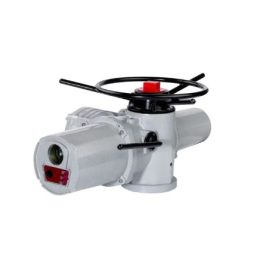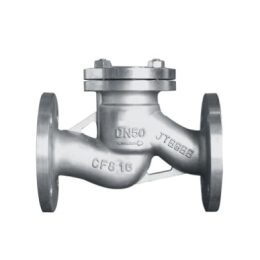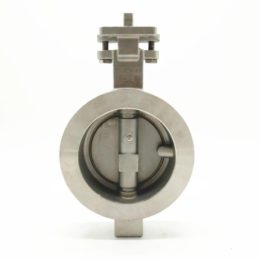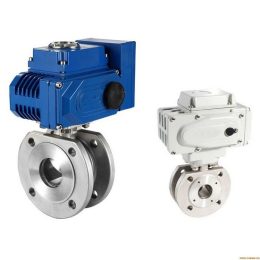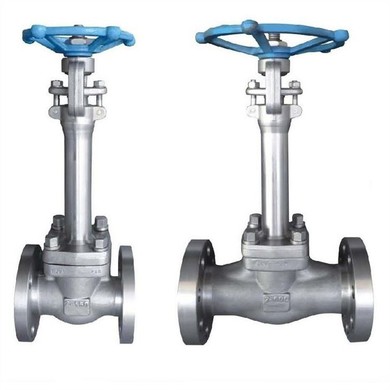
Cryogenic Globe Valve
Introduction
F-V, a market leader in providing valves for difficult services, produces Cryogenic Globe Valves that meet MSS-SP70 specifications. These valves are used in a variety of applications, including highly corrosive environments in chemical and petrochemical plants, chlorine gas, semiconductor, pulp and paper industries, crude and diesel fuel, fresh water and seawater in shipbuilding or on existing cargo, tanker or passenger ships, food applications, LNG liquefaction, LNG tanker ships, and LNG receiving terminals.
Features of Cryogenic Globe Valves
Cryogenic Globe Valves are designed to operate at cryogenic temperatures, which can range from -196°C to -269°C. These valves are made of materials that can withstand the low temperatures and high pressures of cryogenic fluids. The valve body and bonnet are usually made of stainless steel, while the stem and disc are made of materials such as stainless steel, bronze, or aluminum bronze.
Another important feature of Cryogenic Globe Valves is their ability to prevent leakage. These valves have a special design that allows them to create a tight seal between the valve body and the disc, which helps to prevent any leakage of cryogenic fluids.

Technical Specifications:
| Description | Specification |
|---|---|
| Sizes | NPS 1/2 to NPS 48 |
| Pressure Class | Class 150 to 2500 |
| Casting Materials | A351 CF8, CF8M, CF3, CF3M, |
| Forging Materials | A182 F304, F3304L, F316, F316L |
| Bore | Full or Reduced |
| End Connections | RF, RTJ, or BW |
| Stem Design | Outside Screw & Yoke (OS&Y), rising stem |
| Bonnet Type | Bolted Bonnet or Pressure Seal Bonnet |
| Disc Design | Flexible or Solid Wedge |
| Seat Rings | Renewable |
Design Standard
Design & manufacture according to API 600, API 603, ASME B16.34
Face-to-face according to ASME B16.10
End Connection according to ASME B16.5 (RF & RTJ), ASME B16.25 (BW)
Test & inspection according to API 598
Also available per NACE MR-0175, NACE MR-0103, ISO 15848, API624
Advantages of Cryogenic Globe Valves
One of the main advantages of Cryogenic Globe Valves is their ability to handle cryogenic fluids safely and efficiently. These valves are designed to prevent leakage, which is important when dealing with cryogenic fluids that can be dangerous if not handled properly.
Cryogenic Globe Valves also have a long service life. They are made of materials that can withstand the extreme temperatures and pressures of cryogenic fluids, which means they can last for many years without needing to be replaced.
Another advantage of Cryogenic Globe Valves is their versatility. They can be used in a variety of cryogenic applications, such as LNG storage, transportation, and processing. This makes them a valuable asset in the oil and gas industry.
Applications of Cryogenic Globe Valves
Cryogenic Globe Valves are used in many cryogenic applications, including:
- LNG storage
- LNG transportation
- LNG processing
- Liquid nitrogen storage
- Liquid oxygen storage
- Aerospace industry
- Medical industry
Frequently Asked Questions
Q: What is a Cryogenic Globe Valve? A: Cryogenic Globe Valves are valves that are specifically designed to withstand extremely low temperatures and high pressures. They are used to control the flow of cryogenic fluids, such as liquid nitrogen, liquid oxygen, and LNG.
Q: What materials are Cryogenic Globe Valves made of? A: The valve body and bonnet are usually made of stainless steel, while the stem and disc are made of materials such as stainless steel, bronze, or aluminum bronze.
Q: What are the advantages of using Cryogenic Globe Valves? A: Some advantages of Cryogenic Globe Valves include their ability to handle cryogenic fluids safely and efficiently, their long service life, and their versatility.
Q: What are some applications of Cryogenic Globe Valves? A: Cryogenic Globe Valves are used in many cryogenic applications, including LNG storage, transportation, and processing, liquid nitrogen storage, liquid oxygen storage, aerospace industry, and medical industry.
- The Importance of Automatic Control Valves in Industrial Processes
- Can Stainless Steel Flanges Be Corrosion Resistant?
- How to choose electric valve and pneumatic valve
- Ball Valve Pressure Limitation And Troubleshooting Methods
- Gate Valves Can Be Classified In Two Ways
- Butterfly Valve Basics: Anatomy and Design
